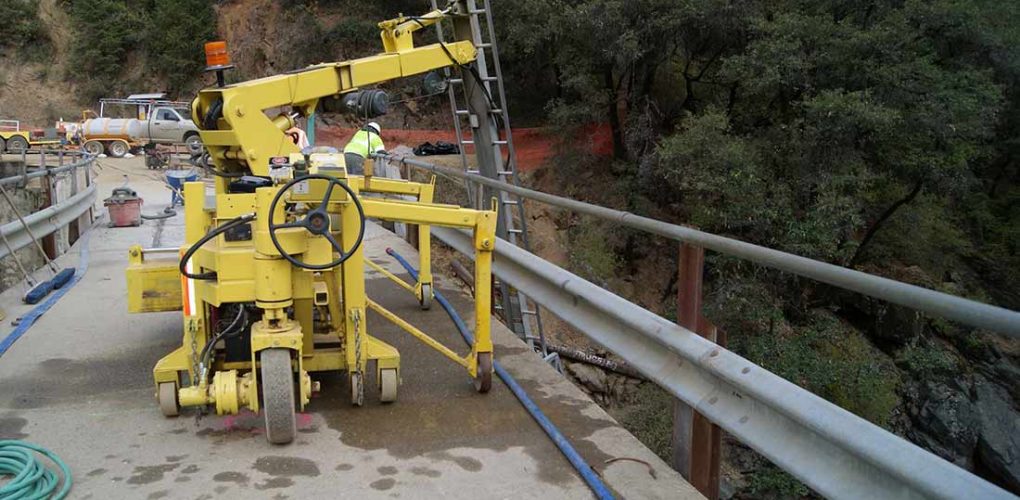Perhaps more than any other group of engineers and builders, those who develop and maintain bridges — and install utility infrastructure on them — depend on their equipment. It’s almost impossible to get work done if generators, power tools, trucks, or lifts are out of commission.
Because of this, there’s a great deal of debate about whether it makes more sense to perform preventative or predictive maintenance on equipment.
For grounding purposes, here are simple explanations of the two types of maintenance:
Preventative: Maintenance work is performed on equipment regularly to reduce the likelihood that it will fail and need to be taken out of service. The goal is to keep equipment from breaking down and causing interruptions on the job.
Predictive: Maintenance is not performed regularly. It happens based on the actual condition of equipment and is only done when needed. Predictive maintenance is generally considered the less costly approach because equipment is serviced less frequently. (This technique is also referred to as reliability-centered maintenance or condition-based maintenance.)
In this article, we’ll explore whether predictive maintenance is really the more cost-effective option and make the case for why preventative maintenance is a solution worth considering for engineers and contractors working on bridges and utility installation projects. We’ll also discuss outsourcing, which could be an attractive option for contractors.
Comparing preventative & predictive maintenance
The following scenarios about purchasing and maintaining a car help clarify the difference between preventative and predictive maintenance.
| Preventative maintenance | Predictive maintenance |
| You purchase a new car. | You purchase a new car. |
| The manual recommends maintenance at three months or 3,000 miles. | The manual recommends maintenance at three months or 3,000 miles. |
| You believe in preventative maintenance because you want to keep your car in perfect working order. | You prefer predictive maintenance. You only want to go to the shop often enough to keep your car from breaking down. |
| You only drive the car 2,000 miles in the first three months. | You drive the car 8,000 miles in the first six months, and the oil light comes on. |
| Despite having driven the car only 2,000 miles, you take it in for maintenance exactly three months from the day you purchased it. | You decide to take your car in to get it checked a few days after the oil light goes on. The people in the garage mention that you brought it in just in time. Waiting any longer could have likely resulted in a breakdown. |
Preventative maintenance
Preventative maintenance is scheduled based on several factors, including:
- Time: Repair work happens at regular intervals.
 Events: Equipment is serviced depending on prescribed things happening, such as prior to moving it to a job site or storing it away.
Events: Equipment is serviced depending on prescribed things happening, such as prior to moving it to a job site or storing it away.- Data: Repairs occur based on meter (usage) or odometer (mileage) readings.
- Manufacturer’s specifications: Maintenance takes place as specified in the instruction manual or warranty documentation.
- Age: Older equipment receives more scheduled maintenance than new.
The issue: Preventative maintenance doesn’t take place based on wear-and-tear or the actual condition of equipment. Because of this, conventional wisdom believes that unnecessary maintenance occurs, which is costly and wasteful.
The benefit: With preventative maintenance, it is highly unlikely that equipment will go out of service unexpectedly. Workers on bridge construction and maintenance sites can rest assured knowing they will always have the tools and equipment they need to get the job done. Project managers don’t have to worry that breakdowns will knock them off schedule.
Predictive maintenance
 Predictive maintenance is triggered based on the actual condition of equipment and its likelihood to fail, with little consideration of schedules or manufacturer recommendations. Techniques used to predict failure include thermal imaging, vibration analysis, sonic or ultrasonic analysis, oil analysis, emission testing, and condition monitoring. (See sidenote for more detailed information about these techniques.)
Predictive maintenance is triggered based on the actual condition of equipment and its likelihood to fail, with little consideration of schedules or manufacturer recommendations. Techniques used to predict failure include thermal imaging, vibration analysis, sonic or ultrasonic analysis, oil analysis, emission testing, and condition monitoring. (See sidenote for more detailed information about these techniques.)
Maintenance also takes place when the people using equipment sense something is wrong. Whether using personal observations or advanced techniques, it is usually a clear sign that equipment needs maintenance when it’s running at exceedingly high temperatures or emitting unusual odors.
The issue: When maintenance isn’t regularly scheduled, equipment may need to be pulled offline for repairs at inconvenient times. In addition, signs of wear or possible failure can be missed, which leads to equipment breakdowns, causing costly interruptions and delays on job sites.
The benefit: Predictive maintenance is generally cheaper because less is spent on upkeep.
Sidenote: Predictive maintenance analysis and testing techniques
| Thermal imaging | The most common thermal test uses infrared imaging to look for hot spots in equipment while it’s in use. Worn components and malfunctioning electrical circuits generate heat that appears in the image as a hot spot. Inspecting these areas usually finds potential issues that require repair. |
| Vibration analysis | This type of analysis uses a handheld vibration analyzer or a monitor built into the machine to check vibrational activity. When parts of a machine (for example, shafts and bearings) begin to wear out, they vibrate in a different way. Trained professionals know how to identify these patterns and understand what they mean and the types of repairs that could be warranted. Vibration analysis is one of the most accurate techniques for identifying functional issues in machines. |
| Sonic and ultrasonic analysis | This technique is similar to vibrational analysis, except that it uses sound cues to find problems. Sound-related analysis is a good way to find small cracks and failing welds before they’re visible and become big issues. |
| Oil analysis | This type of testing checks the condition of the oil in a machine and identifies particles and liquids present in it. Metal particles are a sign of wear (the more metal present, the greater the wear), and unexpected liquids could point to a leak (the more liquid, the more serious the leak). |
| Emission testing | Testing of waste gases and effluent is usually done for environmental purposes. However, the composition of the gases and what’s present in the effluent can point to problems and identify issues when they’re starting to happen. If you’re already doing this testing for environmental analysis, it’s efficient to add a predictive maintenance component to it. |
| Condition monitoring | Adding sensors to machines makes it easier to monitor wear and tear. A central system measures and monitors data and reports issues. The system can be run in-house or by an outside company. (Smaller engineering firms with limited staffing often use the out-sourced option.) |
Why the benefits of predictive maintenance may be inflated
It’s easy to overestimate the cost benefits of predictive maintenance. Here are three reasons why:
- While ongoing maintenance of equipment is less expensive, it can leave projects (especially larger ones) vulnerable to equipment breakdowns that can cost more than extra preventative care.
Think about it. Having a failed piece of equipment out of service leaves workers unproductive. This is a big waste of payroll dollars. Equipment failure can also lead to delay-related penalties (a common issue on bridge sites, where speedy development is often rewarded by project sponsors and delays penalized). These fees can cost a lot more than regular maintenance costs and significantly impact the bottom lines of projects.
- It’s more difficult to maintain an efficient supply of parts.
Job sites that use predictive maintenance must keep a larger inventory of parts (some quite expensive) because they’re never quite sure when they’ll need them. While there may be some unnecessary replacement of parts with preventative maintenance, it may not cost much more when you consider the inventory waste that comes with the predictive approach.
- Many pieces of equipment could require repair at once or at inopportune times.
This could further exacerbate on-the-job delays and require overtime pay or additional staffing to get service done.
Evaluating your situation
There is a lot to consider when deciding between preventative and predictive maintenance. At its simplest:
If staying on time and delivering a highly efficient level of service is your top priority, preventative maintenance is likely the better way to go.
If controlling costs is most important to you, predictive maintenance is probably the better bet.
There is a more complex way to think about this. Generally, the larger the project, the bigger an impact a breakdown or unscheduled service can have on it. A simple equipment outage could have ramifications across all aspects of a work site. Think of it as the domino effect. If a generator breaks down or is taken unexpectedly out of service, it could stop all work in the immediate area. It could also affect activity on adjacent sections of the bridge site, related projects, and future work.
Because of this issue, larger bridge development and maintenance projects and utility installations may prefer to practice preventative maintenance.
Another option
Many firms prefer to transfer responsibility for equipment maintenance to third parties. One way to do this is by renting equipment. This is a particularly effective solution for machinery, such as lifts, that are particularly complicated to maintain. Responsibility for equipment maintenance — and replacement — is transferred to the rental company.
Interested in learning more about the benefits of renting equipment? Check out this information from Bridgemasters. It could be a good way to reduce risks and control costs on your job sites.

